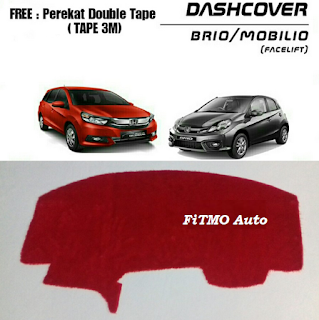The Mini Cooper is sporty and fun. It's practical as a two-seat car, with comfortable seats, useful cargo capacity, and an EPA-rated City/Highway 28/37 miles per gallon.
Inside, the Mini Cooper is large enough to accommodate all sizes of drivers and front passengers in comfort. The rear seats in the hardtop allow four adults. With its hatchback and folding rear seats, the Mini Cooper can haul reasonable amounts of gear. The convertible has less rear seat room and considerably less rear cargo capacity than the hardtop. For those who want more room there is the Clubman, which is 9.4 inches longer in overall length and 3.2 inches longer in the wheelbase. Kind of like a small station wagon, the Clubman has side-opening rear doors and, for entry to the rear seat, a single, rear-hinged door on the passenger's side.
Styling options allow owners to personalize their cars, with choices in upholstery style, material and color, and in trim panels, accent panels, and ambient lighting. Check too many options and the Mini's price can raise quickly from economy-entry to near-luxury levels, but all Minis are well equipped for what you pay.
The 1.8-liter dohc four-cylinder engine is rated at 118 horsepower and 114 pound-feed of torque in the Cooper models and, with a turbocharger, 172 horsepower and 177 pound-feet of torque in the Cooper S models. It is available with a six-speed manual or a six-speed automatic transmission. While all the Minis are very fun to drive, the Cooper S models deliver exhilarating performance and nimble handling that must be experienced to be fully appreciated.
The Mini's heritage dates back to the late 1950s, when it was conceived by the British Motor Corporation to provide the optimum in efficient, minimalist transportation. It was roomy for four adults and surprisingly comfortable. It was cheap to build, cheap to buy, and cheap to run.
But the Mini's fundamental cuteness lent it a sort of chic. The Mini was sporty and fun to drive. Soon it was adopted by celebrities such as Peter Sellers, who drove one on screen as well as off. The Mini Cooper survived multiple corporate mergers and disasters; and by the time production finally ended in the 1990s, its pioneering transverse engine (mounted sideways, rather than lengthwise, to save space) had been imitated by most automakers. BMW now owns the Mini brand, and revived the marque with an all-new car for the 2000 model year. For 2007 it was redesigned into the current-generation version. The Clubman joined the lineup for 2008 and the convertible was added for 2009. For 2010, there are no significant changes.
Of some 6 million original Minis, the best-known were the high-performance variants tuned by race-car builder John Cooper. Multiple rally and touring-car championships, including overall wins at the Monte Carlo Rally in 1964 and '67, assured the Mini Cooper's reputation as a small but formidable force in motorsports. The revived company plays off that heritage by offering high-performance John Cooper Works models that feature more power and tighter suspension.
Inside, the Mini Cooper is large enough to accommodate all sizes of drivers and front passengers in comfort. The rear seats in the hardtop allow four adults. With its hatchback and folding rear seats, the Mini Cooper can haul reasonable amounts of gear. The convertible has less rear seat room and considerably less rear cargo capacity than the hardtop. For those who want more room there is the Clubman, which is 9.4 inches longer in overall length and 3.2 inches longer in the wheelbase. Kind of like a small station wagon, the Clubman has side-opening rear doors and, for entry to the rear seat, a single, rear-hinged door on the passenger's side.
Styling options allow owners to personalize their cars, with choices in upholstery style, material and color, and in trim panels, accent panels, and ambient lighting. Check too many options and the Mini's price can raise quickly from economy-entry to near-luxury levels, but all Minis are well equipped for what you pay.
The 1.8-liter dohc four-cylinder engine is rated at 118 horsepower and 114 pound-feed of torque in the Cooper models and, with a turbocharger, 172 horsepower and 177 pound-feet of torque in the Cooper S models. It is available with a six-speed manual or a six-speed automatic transmission. While all the Minis are very fun to drive, the Cooper S models deliver exhilarating performance and nimble handling that must be experienced to be fully appreciated.
The Mini's heritage dates back to the late 1950s, when it was conceived by the British Motor Corporation to provide the optimum in efficient, minimalist transportation. It was roomy for four adults and surprisingly comfortable. It was cheap to build, cheap to buy, and cheap to run.
But the Mini's fundamental cuteness lent it a sort of chic. The Mini was sporty and fun to drive. Soon it was adopted by celebrities such as Peter Sellers, who drove one on screen as well as off. The Mini Cooper survived multiple corporate mergers and disasters; and by the time production finally ended in the 1990s, its pioneering transverse engine (mounted sideways, rather than lengthwise, to save space) had been imitated by most automakers. BMW now owns the Mini brand, and revived the marque with an all-new car for the 2000 model year. For 2007 it was redesigned into the current-generation version. The Clubman joined the lineup for 2008 and the convertible was added for 2009. For 2010, there are no significant changes.
Of some 6 million original Minis, the best-known were the high-performance variants tuned by race-car builder John Cooper. Multiple rally and touring-car championships, including overall wins at the Monte Carlo Rally in 1964 and '67, assured the Mini Cooper's reputation as a small but formidable force in motorsports. The revived company plays off that heritage by offering high-performance John Cooper Works models that feature more power and tighter suspension.
 RSS Feed
RSS Feed Twitter
Twitter






 Thursday, February 24, 2011
Thursday, February 24, 2011
 Samipodo
Samipodo

0 komentar:
Post a Comment